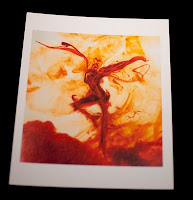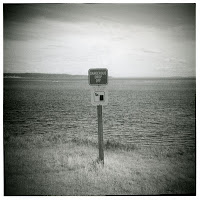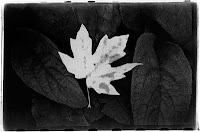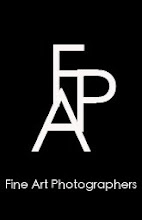I thought we would end this year here, where I live, South Florida, with images best shown by our current "Featured Artist" Bob Hudak. His views are classic photography, large format and yes film.
Self taught, he leaves his former life as pilot flying air taxis, throughout Florida and the Bahamas where he develops his taste for the landscapes he sees.

Bob takes his influence from one of the greats, Edward Weston and makes black&white photography his choice of expression.
"The photographs shown here were produced from negatives made with large format cameras. Originally, because of its relatively small size, the 4 x 5 inch view camera was my camera of choice. However, with my increasing interest in the contact printing processes and my aversion to making enlarged negatives, the 5 x 7, 8 x 10 and (soon) larger formats more likely will get the nod. However, the use of these relatively small camera sizes, in comparison to 8 x 10 inch and larger cameras, does offer a wider range of flexibility when it comes to printing. With certain subjects these negatives can be printed as contact prints or when needed as with a large landscape the 5 x7 inch negative can produce 16 x 20 inch prints of outstanding quality.
"
Since 1984, he has worked for various publications on travel adding commercial work in Architecture, Aerials, and Yacht photography and supplying stock agencies with his images. Florida becomes his choice for his work.
"My reasoning behind the Florida trips was that while the West in general and more specifically Montana does have a lot to offer the photographer working in the landscape I do not live there, and while I have returned many times it has been mostly with a fly rod to fish on the Madison, Yellowstone and numerous other rivers and streams around the state. To do something productive with a camera would require repeated visits to easily accessible, visually interesting areas; in short, I felt I needed to stay closer to home base.
The Florida that I grew up in, that is to say, South Florida in the late sixties, seventies and early eighties is, unfortunately, gone. Today’s post Disney version of Florida bears little resemblance to that period of time before the floodgates were opened and the mass influx of new residents hit my part of the state. The booming population and the infrastructure needed to support it, guaranteed that the lakes and woods used by myself and my friends as our escape from the real world would soon be filled in, paved over and lost forever under a sea of concrete and asphalt, never to be seen again except in memory."
His love of the outdoors continues to draw his attention adding to an over 16 year project dedicated to personal vision and viewpoint.
"As a photographer working with a landscape that now exists only as a fraction of the place you once knew, the challenge is to bring an awareness to the land through your photographs without resorting to sentiment in the hope of protecting what little we still have left, knowing that loosing this, it too is gone forever.
With these photographs my hope is to engage the viewer in a way that conveys not only a love of the land but also acknowledges the presence of something spiritual. Not spiritual in a biblical meaning, but something deeper, more to do with the belief that there is this unseen force in the universe larger than ourselves we can’t understand and that science and religion can’t explain. More than once it has been suggested to me that my photographs of the Florida landscape have been subconsciously my attempt to bring back the Florida that was, and in doing so recapture my youth and that, which disappeared with it. I’ve never had an intelligent reply to that comment; however if these images succeed at all then maybe what I’ve been doing for the past eighteen years hasn’t been a search for what I’ve lost of myself, but rather a search for the manifested Gods that are to be found within these lands."
For more of his work




























 not shown in A&I..a client has it..
not shown in A&I..a client has it..














